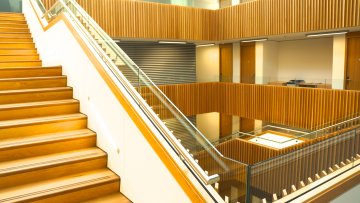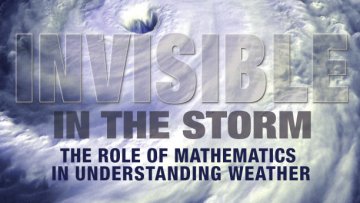Growth of finite perturbations in spatiotemporal systems
16:00
Algebraic characterisation of convergence
Abstract
> Fréchet-Urysohness, we can translate this property into other structural
> forms for many problems and classes of spaces. In this talk, I will
> recap this internal characterisation and translate the properties of
> being radial / Fréchet-Urysohn (Stone-Čech, Hewitt) into the prime ideal
> structure on C*(X) / C(X) for Tychonoff spaces, with a view to reaching
> out to other parts of algebra, e.g. C*-algebras, algebraic geometry, etc.
12:30
The Artin approximation theorem in algebraic geometry
Abstract
Given a commutative ring A with ideal m, we consider the formal completion of A at m, and we ask when algebraic structures over the completion can be approximated by algebraic structures over the ring A itself. As we will see, Artin's approximation theorem tells us for which types of algebraic structures and which pairs (A,m) we can expect an affirmative answer. We will introduce some local notions from algebraic geometry, including formal and etale neighbourhoods. Then we will discuss some algebraic structures and rings arising in algebraic geometry and satisfying the conditions of the theorem, and show as a corollary how we can lift isomorphisms from formal neighbourhoods to etale neighbourhoods of varieties.
Gravity as (gauge theory)^2: from amplitudes to black holes
Abstract
We will discuss the relation between perturbative gauge theory and
perturbative gravity, and look at how this relation extends to some exact
classical solutions. First, we will review the double copy prescription that
takes gauge theory amplitudes into gravity amplitudes, which has been
crucial to progress in perturbative studies of supergravity. Then, we will
see how the relation between the two theories can be made manifest when we
restrict to the self-dual sector, in four dimensions. A key role is played
by a kinematic algebraic structure mirroring the colour structure, which can
be extended from the self-dual sector to the full theory, in any number of
dimensions. Finally, we will see how these ideas can be applied also to some
exact classical solutions, namely black holes and plane waves. This leads to
a relation of the type Schwarzschild as (Coulomb charge)^2.
We are always told that our work envrionment is critical to the work itself. But do mathematicians need a stimulating environment for their work? Or will just a computer and some coffee do?
Andreas Hadjittofis, a Masters Students in Mathematical Modelling and Scientific Computing, believes they do. Watch him describe how the Andrew Wiles Building in Oxford works for him.
17:00
Dynamics of Particles in Liquid Crystals
Abstract
Dynamics of small particles in fluids have fascinated scientists for centuries. Phenomena such as Brownian motion, sedimentation, and electrophoresis continue to inspire cutting-edge research and innovations. The fluid in which the particles move is typically isotropic, such as water or a polymer solution. Recently, we started to explore what would happen if particles are placed in an anisotropic fluid: a liquid crystal. The study reveals that the liquid crystal changes dramatically both the statics and dynamics, leading to levitation of the particles, their anomalous Brownian motion and new mechanisms of electrokinetics. The new phenomena are rooted in anisotropy of the liquid crystal properties, such as different electric conductivity in the directions parallel and perpendicular to the average molecular orientation.
The holographic supersymmetric Renyi entropy in five dimensions
Abstract
I will describe the computation of the supersymmetric Renyi entropy across an entangling 3-sphere for five-dimensional superconformal field theories. For a class of USp(2N) gauge theories I’ll also construct a holographic dual 1/2 BPS black hole solution of Euclidean Romans F(4) supergravity. The large N limit of the gauge theory results will be shown to agree perfectly with the supergravity computations.
Towards the compatibility of Geometric Langlands with the extended Whittaker model
Abstract
Let $G$ be a connected reductive group and $X$ a smooth complete curve, both defined over an algebraically closed field of characteristic zero. Let $Bun_G$ denote the stack of $G$-bundles on $X$. In analogy with the classical theory of Whittaker coefficients for automorphic functions, we construct a “Fourier transform” functor, called $coeff_{G}$, from the DG category of D-modules on $Bun_G$ to a certain DG category $Wh(G, ext)$, called the extended Whittaker category. Combined with work in progress by other mathematicians and the speaker, this construction allows to formulate the compatibility of the Langlands duality functor $$\mathbb{L}_G : \operatorname{IndCoh}_{N}(LocSys_{\check{G}} ) \to D(Bun_G)$$ with the Whittaker model. For $G = GL_n$ and $G = PGL_n$, we prove that $coeff_G$ is fully faithful. This result guarantees that, for those groups, $\mathbb{L}_G$ is unique (if it exists) and necessarily fully faithful.



